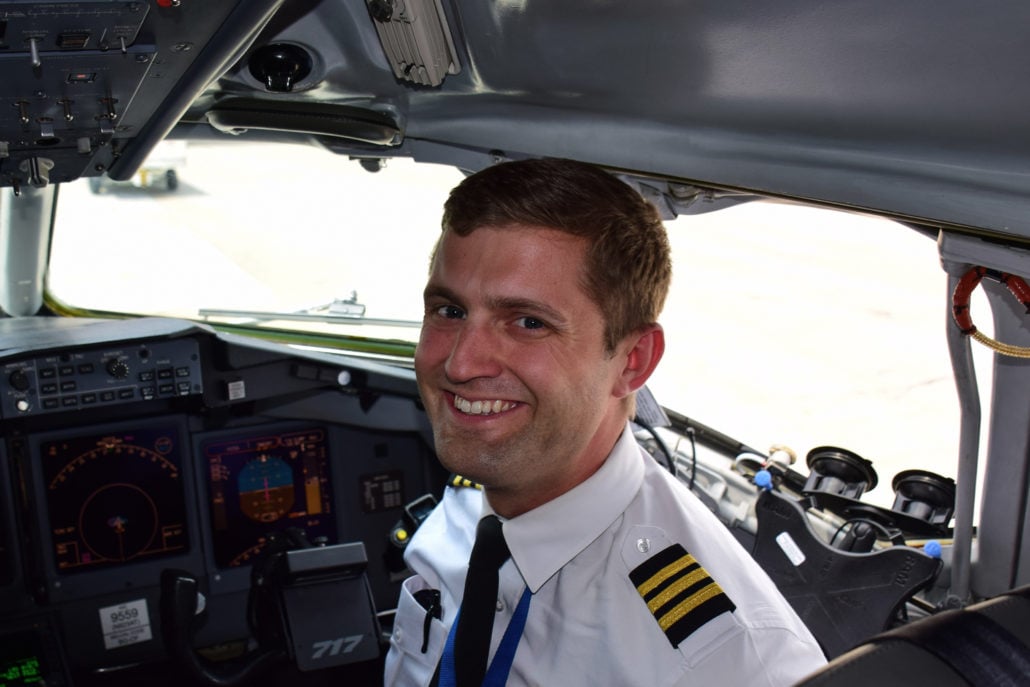
In our Ask a Pilot series, pilot Spencer Marker answers one of your aviation-related questions each week. See past installments here and submit your own to Whitney@johnnyjet.com.
The question
Why can’t some airplanes fly when it’s hot?
—Jack
The answer
Thanks for the question this week, Jack. Summer is definitely upon us. And as travelers begin making their way across the country to spend time with loved ones, some flyers in the southwest US got to experience something very uncommon: temperatures too hot to fly.
As temperatures in Phoenix soared to over 120º Fahrenheit, American Airlines was forced to cancel 40 flights from that hub. They also offered customers the opportunity to change their itinerary if their flights were operating between 3pm and 6pm, the hottest part of the day.
What passengers routed through the southwest discovered that day was that, yes, airplanes have a maximum operating temperature. This limitation has everything to do with the density of the air, and its effect on the performance of an airplane.
Air density and airplanes
The density of air in the atmosphere is a function of both the temperature of the air and elevation above sea level. As temperature increases, the number of air molecules in a given volume decreases. Or, the air becomes less dense. Similarly, as altitude increases, the air also becomes less dense.
This becomes a problem for flying because the air is used to create lift and support the weight of the aircraft by flowing over the wing. Additionally, the engines must compress the air in order to ignite it and convert it to thrust. So as the density of the air decreases, the wing becomes less effective in creating lift, and the engine produces less thrust. This results in a longer takeoff roll for aircraft departing airports that are either high above sea level (like Denver) or in hot locations (like Phoenix).
So for aircraft departing high altitude airports like Denver, a much longer takeoff roll is required compared to departing from an airport at sea level. This is why Denver has runways 12,000-feet long and one 16,000-feet long. Similarly, when the temperature is high, aircraft will also have an extended takeoff roll due to the decrease in air density.
However, some airports runways are not long enough to facilitate the increase in takeoff distance. Airlines will compensate by lowering the takeoff weight of the airplane. Sometimes bags, cargo or passengers will be removed. I’ve seen flights of aircraft with 50 seats restricted to only 32 for just this reason.
Temperature limits
So with a runway long enough or with a takeoff weight light enough, an airplane should be able to operate in any temperature, right? Hypothetically this may be true. However, manufacturers only publish performance data for a certain range of temperatures and altitudes. During certification of an aircraft, data is collected on aircraft performance at certain temperatures and altitudes. The manufacturer compiles this data into useful takeoff and landing performance information and provides it to the airlines. Since the manufacturer cannot test every temperature condition and altitude, there exist limits to the data they provide. So while it may be possible to take off and land outside these limits, doing so is prohibited as there is no data to how the airplane will perform.
Many of the flights canceled in Phoenix were Bombardier CRJ aircraft, which have a maximum takeoff temperature of roughly 118ºF. Other aircraft, like the Boeing 737 and Airbus A320 series, have max operating temperatures of over 125ºF.
To sum up
Flying during the hot summer months brings many additional considerations to your flight crews. As performance in hot weather degrades the ability of the aircraft to accelerate, take off and climb, pilots are careful to ensure they are operating safely within the performance window specified by the manufacturer of the airplane.
And while it can be annoying to cancel flights because the weather is too hot, this occurrence is very rare.
If anyone have a burning aviation question or something you would like cleared up, drop us a line at Whitney@johnnyjet.com to get your question featured in an upcoming Ask a Pilot column.
Tailwinds,
—Spencer







